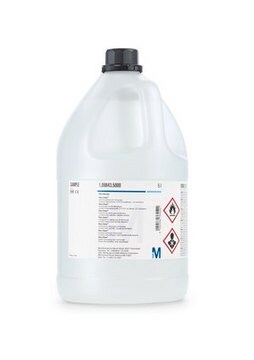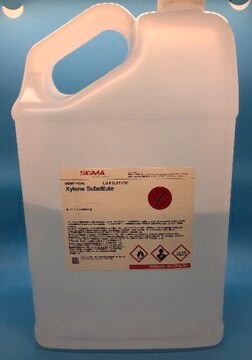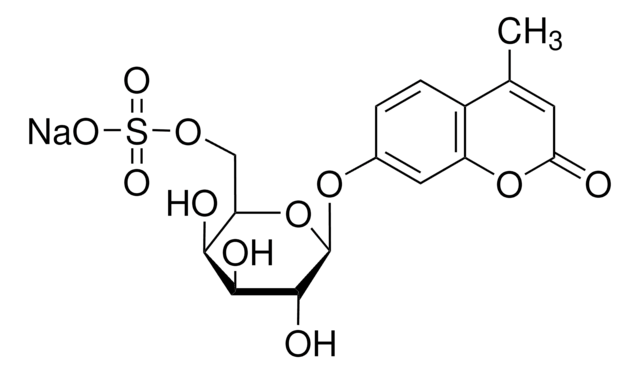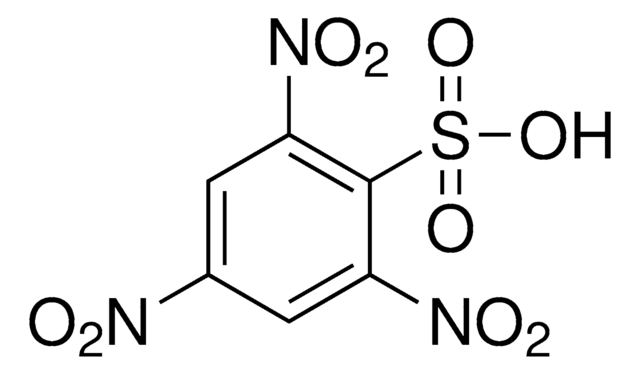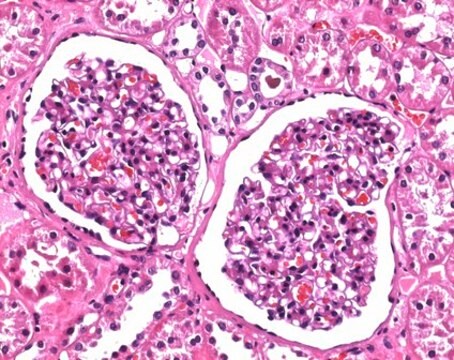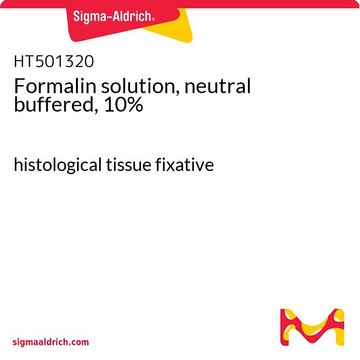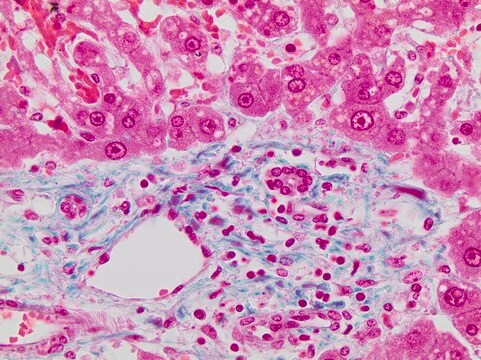H2904
HistoChoice® Tissue Fixative
Iniciar sesiónpara Ver la Fijación de precios por contrato y de la organización
About This Item
Código UNSPSC:
12352202
NACRES:
NA.47
Productos recomendados
Aplicación
Designed for the molecular biologist. Specially formulated to preserve antigenic sites for antibody probes and nucleic acid sites for in situ hybridizations. Fixed sections do not require predigestion or other recovery procedures to make important sites available.
Calidad
Contains no formaldehyde, glutaraldehyde or mercury. Non-toxic
Información legal
HistoChoice is a registered trademark of Amresco, Inc.
Palabra de señalización
Danger
Frases de peligro
Clasificaciones de peligro
Acute Tox. 4 Inhalation - Eye Irrit. 2 - Flam. Liq. 2 - Muta. 2 - Skin Irrit. 2 - Skin Sens. 1 - STOT SE 3
Órganos de actuación
Respiratory system
Código de clase de almacenamiento
3 - Flammable liquids
Clase de riesgo para el agua (WGK)
WGK 1
Equipo de protección personal
Eyeshields, Faceshields, Gloves, type ABEK (EN14387) respirator filter
Elija entre una de las versiones más recientes:
¿Ya tiene este producto?
Encuentre la documentación para los productos que ha comprado recientemente en la Biblioteca de documentos.
Los clientes también vieron
Michael E Titford et al.
Archives of pathology & laboratory medicine, 129(4), 502-506 (2005-03-30)
In 1987, the Formaldehyde Standard became law in the United States, alerting laboratory workers to the potential carcinogenicity of formaldehyde. As a result, a variety of proprietary fixatives were developed for use in surgical pathology. To assess histomorphology with different
M A Kacena et al.
Biotechnic & histochemistry : official publication of the Biological Stain Commission, 79(5-6), 185-190 (2005-03-15)
We compared histochemical and immunohistochemical staining as well as fluorochrome labeling in murine bone specimens that were fixed with 10% neutral buffered formalin to those fixed with HistoChoice. We showed that sections from undecalcified tibiae fixed for 4 h in
J Melrose et al.
Biotechnic & histochemistry : official publication of the Biological Stain Commission, 83(1), 47-53 (2008-06-24)
Histochoice is a proprietary nontoxic, non-cross-linking fixative designed by the manufacturer to replace formaldehyde based fixation protocols. We compared Histochoice and formalin fixation for several cartilaginous tissues including, articular and growth plate cartilage, meniscus and intervertebral disc. The tissues were
D G Vince et al.
Analytical cellular pathology : the journal of the European Society for Analytical Cellular Pathology, 15(2), 119-129 (1997-01-01)
Formaldehyde fixatives have traditionally been used to preserve tissues as they impart excellent morphological preservation. Formaldehyde fixes tissue by cross linking, a process which can reduce the antigenicity of tissue and weakens the intensity of immunohistochemical stains. Preliminary studies have
Erik P Rader et al.
Aging cell, 17(5), e12816-e12816 (2018-07-12)
Snell dwarf mice (Pit1dw/dw ) exhibit deficiencies in growth hormone, prolactin, and thyroid stimulating hormone. Besides being an experimental model of hypopituitarism, these mice are long-lived (>40% lifespan extension) and utilized as a model of slowed/delayed aging. Whether this longevity
Nuestro equipo de científicos tiene experiencia en todas las áreas de investigación: Ciencias de la vida, Ciencia de los materiales, Síntesis química, Cromatografía, Analítica y muchas otras.
Póngase en contacto con el Servicio técnico
